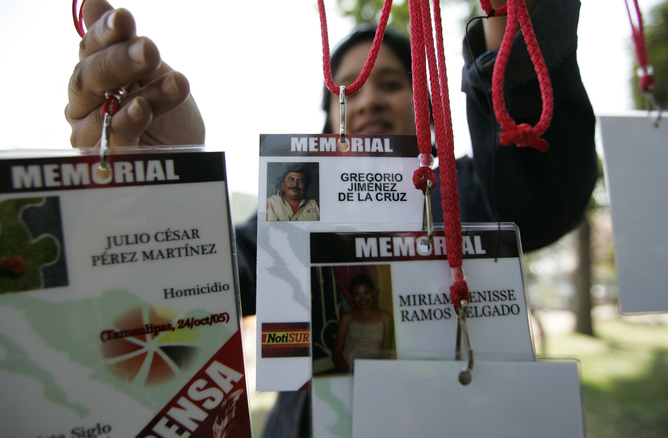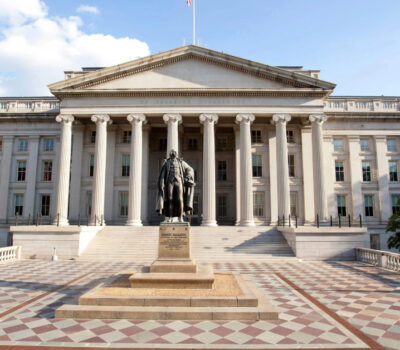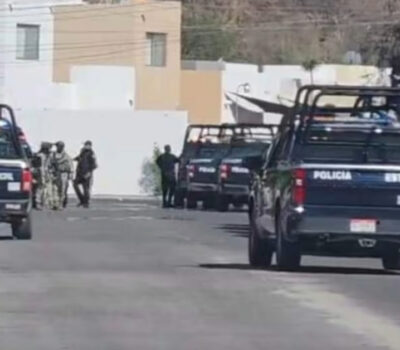During Pope Francis’ recent tour of Mexico, he denounced the country’s illicit drug trade, while calling for social programs to lift up the poor.
One thing he didn’t explicitly touch on: the precarious situation Mexican journalists find themselves in. In fact, on February 9 – four days before the pope’s arrival – the body of El Sol de Orizaba crime reporter Anabel Flores was found on the side of a highway. It was the third murder of a Mexican journalist in 2016.
With a press freedom index on par with the United States as recently as 10 years ago, the Mexican press has since been stifled, caught in the crossfire of drug violence and government corruption. Today, the country is one of the most dangerous places in the world to be a journalist.
In many instances, the fate of journalists depends on how antagonistic or critical they are of local governments and organized crime, two entities that have become increasingly entangled in several regions of the country.
Report at your own risk
Limits on press freedom in Mexico manifest in a variety of forms. In some instances, soft power – whether it’s ad placements, the promotion of narco-culture through music and TV programs, or bribes – is used to encourage favorable coverage or restrict it altogether. Sometimes fearful media owners will fire journalists from their jobs for investigating corruption cases or criminal activity. Others have been physically attacked, jailed or murdered.
Press interference extends all the way to the presidency. Take last year’s firing of radio journalist Carmen Aristegui. Aristegui, who also has a program in CNN-Español, is one of the most trusted and famous investigative journalists in Mexico. She and her team of reporters usually cover high-profile, public figures – a beat that has won her a number of enemies.
In 2011, President Enrique Peña Nieto and his wife, Angelica Rivera, a famous soap opera actress, built a gleaming US$7 million mansion that Mexicans nicknamed the “White House.”
But an investigation by Aristegui shed light on a serious conflict of interest between President Nieto and the Higa Group, the construction conglomerate that built the residence.
During Nieto’s tenure as governor of the state of Mexico, he had granted the Higa Group millions of dollars in public works contracts. The mansion in question was built as a private residency for the president and his wife, but it’s legally registered as property of one of the Higa Group’s companies.
After reporting the conflict of interest, Aristegui found herself jobless. RT.com reported that “the Mexican government’s irritation with independent investigative journalism is behind the fallout with [Aristegui’s employer] MVS Radio.”
Luckily, she’s still alive – unlike many of her peers.
The kill count continues to rise
On the night of January 21, Marcos Hernández Bautista, a news correspondent for the Oaxacan daily Noticias Voz e Imagen, was shot deadas he was getting into his car. One day later, Oaxacan radio host Reynel Martínez Cerqueda was shot and killed while riding in a mototaxi.
Unfortunately, these deaths have become all too common. In fact, if you’re a reporter in Mexico, you’re operating in the most dangerous place to be a journalist in the Western Hemisphere.
Article 19, a British human rights organization that focuses on freedom of the press, estimates that in Mexico, 90 journalists have been killed and 23 have disappeared over the past 15 years.
Reporters Without Borders has arrived at similar numbers: more than 80 murdered journalists and 17 disappearances over the past decade.
Meanwhile, Freedomhouse.org ranks Mexico’s freedom of the press as “not free,” giving it a rating of 63 on a scale of 100 – a number that has risen more than 25 points since 2004. The United States, in contrast, has a score of 22.
Calderón’s culpability
Former president Felipe Calderón’s failed war on drugs ended up compromising the safety of many Mexican citizens – journalists included. At the beginning of his tenure in 2006, Calderón dispatched federal troops to a number of Mexican states to combat local drug cartels.
However, as New York Times reporter Elisabeth Malkin points out, the plan was deeply flawed:
Now a statistical analysis of homicide rates in 18 regions of Mexico during that time confirms that the arrival of soldiers failed to reduce the number of murders in 16 of those areas. In some of the most notable cases, including the border cities of Ciudad Juárez and Tijuana and the Pacific resort city of Acapulco, the murder rate soared in the year after soldiers were put on the streets…
As homicide rates rose during Calderón’s tenure, so did the number of journalists being harassed and killed. The year that Calderón took office, in 2006, 10 journalists were assassinated (compared to four in the previous year). According to Mexico’s Special Prosecutor’s Office for Crimes Against Press Freedom, by 2012 – when he left office – 61 journalists had been killed.
Unfortunately, the situation has only become worse. Since 2012, the Special Prosecutor’s Office has identified at least additional 30 killings of journalists.
Flimsy protections
The situation for journalists is most precarious in areas where organized crime have their strongholds: Guerrero, Tamaulipas, Veracruz, Chihuahua, Sinaloa, Jalisco and Ciudad Juarez.
Criminal organizations exert control over the press by threatening journalist and owners of media outlets, leading to self-censorship.
To avoid violent retaliation, journalists tend to leave out information when covering stories about organized crime.
Those who do report on organized crime face swift reprisals. For example, last year the newspaper El Mañana reported on gunfights in the town of Matamoros that had left nine dead. The day the paper published the articles, armed men kidnapped the paper’s editor and threatened to kill him. The following day, four El Mañana journalists resigned, and the newspaper returned to practicing self-censorship.
Press freedom is also limited in areas that aren’t completely controlled by organized crime, but are nonetheless focal points of social and political conflict.
Over the past 20 years, Mexico has experienced an unprecedented economic and social disparity gap. Protests – for better salaries, better access to education for children, indigenous rights and answers about missing citizens like the Ayotzinapa students – are a daily occurrence.
The local governments of places like Oaxaca, Chiapas, Quintana Roo and the Federal District are all dealing with widespread poverty and inequality. In these places, the local governments – seeking to please businesses and private investors – will often clash with the population.
Because of widespread national and international pressure, the federal government has created policies designed to protect journalists and human rights activists. For example, journalists can seek and receive protection from the state, which includes risk assessment, shelter and home security.
But a lack of public funds and high levels of political corruption – especially at the local level – have rendered many of these protections largely ineffective.
Not surprisingly, it’s difficult for journalists to operate safely when they often find themselves being harassed by the local governments tasked with protecting them.
During Pope Francis' recent tour of Mexico, he denounced the country’s illicit drug trade, while calling for social programs to lift up the poor . . .











